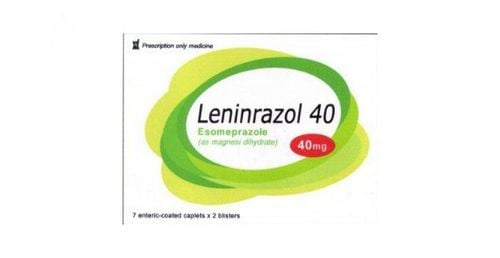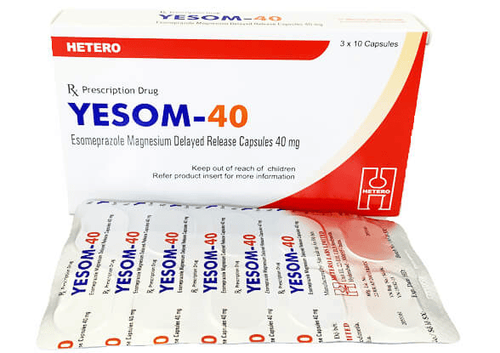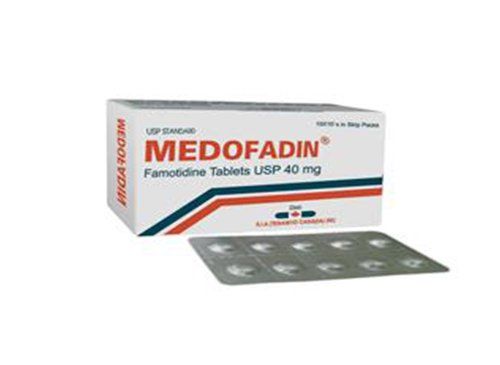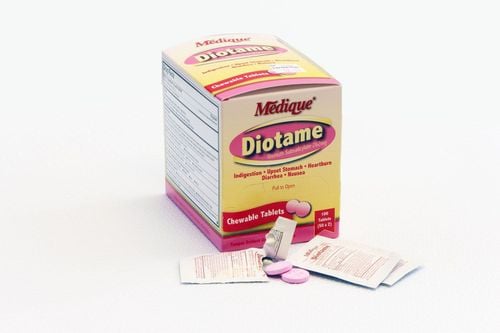This is an automatically translated article.
Cirab drug is used by injection to treat digestive problems such as duodenal ulcer, gastroesophageal reflux, ... In order to improve the effectiveness of treatment and soon overcome the disease, you should use Cirab medicine. exactly as directed by your doctor.
1. What is Cirab drug effect?
Cirab belongs to the group of drugs for the gastrointestinal tract. Cirab is prepared in the form of lyophilized powder for injection, each box includes 1 vial of 5ml. The main active ingredient in Cirab is Rabeprazol Sodium 20mg, in addition to a combination of other auxiliary excipients. Rabeprazole belongs to the group of anti-secretory drugs, capable of blocking gastric secretion through the gastric H+/K+ATPase mechanism at the secretory surface of gastric parietal cells. According to research, Rabeprazole has properties as a gastric proton pump inhibitor and inhibits the last stage of gastric secretion. In the parietal cells of the stomach, the active substance Rabeprazole receives an additional proton, which then accumulates and is converted to the active form of sulfenamide.
In general, the active ingredient Rabeprazole brings the following effects:
Inhibits gastric acid secretion. Prevents stomach ulcers. Improve the lesions in the gastric mucosa. Improvement for conditions with gastroesophageal reflux and Zollinger-Ellison syndrome. Currently, Cirab is commonly prescribed by doctors for the following cases:
Short-term treatment of about 4 - 8 weeks to relieve symptoms and heal gastroesophageal reflux disease that causes erosion or ulcers . If the patient is not cured after 8 weeks of therapy, another course of medication can be used. Maintenance treatment for patients after recovering from gastroesophageal reflux disease, while significantly reducing the recurrence rate of heartburn. Treats heartburn during the day and night and relieves other symptoms caused by GERD. Short-term treatment for 4 weeks for symptomatic relief and healing in patients with duodenal ulcer. Most patients can recover after about 4 weeks of treatment. Combination of Cirab with other antibiotics such as Clarithromycin and Amoxicillin to treat Hp infection, thereby reducing the risk of duodenal ulcer recurrence. For patients experiencing treatment failure, susceptibility testing can be performed. In cases of resistance to clarithromycin or the patient being unable to perform susceptibility testing, the physician may recommend another antibiotic therapy. Long-term treatment of pathological hypersecretory conditions, including Zollinger-Ellison syndrome. However, it is necessary to avoid self-administering Cirab drug to the following patients without the approval of a doctor:
People who are allergic or have a history of hypersensitivity to the active ingredient Rabeprazole or any of the excipients contained in the drug. drug formula. Cirab is contraindicated in patients with hypersensitivity to substituted Benzimidazoles. Relative contraindications to Cirab for pregnant women or mothers who are breastfeeding. Cirab is contraindicated for children because there are not enough studies to prove that the drug is safe to use for this subject.
2. Dosage and instructions for taking Cirab medicine properly
Cirab is usually given by injection under the supervision of a medical professional. Based on the specific medical condition of the patient, the doctor will make a recommendation on the appropriate dose:
Treatment of acute peptic ulcer: Take the usual dose of 20mg / time / day, then continue Maintain treatment with a dose of 10-20mg/day depending on response. Treatment of gastroesophageal reflux syndrome: Use dose from 10 - 20mg / time / day. Treatment of Zollinger-Ellison syndrome: Initial dose is 60mg/day, then can be increased to a maximum of 60mg x 2 times/day depending on the need for each patient. For patients with hepatic or renal impairment, no dose adjustment is required. In addition, the patient also needs to carefully consult the doctor's advice on the use of Cirab medicine in the safest and most effective way. Avoid self-administering, changing the dosage or prolonging the treatment period without your doctor's approval.
3. What side effects does Cirab cause to users?
In some studies both short-term and long-term, it has been shown that Cirab drug can cause adverse effects for patients during treatment, specifically:
Systemic reactions: Fever, asthenia, allergic reactions, irritability, chills, stiff neck, chest pain below the breastbone or sensitivity to light. Cardiovascular system reactions: ECG abnormalities, angina, hypertension, syncope, migraine, sinus bradycardia, palpitations or tachycardia. Gastrointestinal reactions: Nausea, diarrhea, vomiting, abdominal pain, flatulence, dyspepsia, dry mouth, constipation, gastroenteritis, belching, black blood in stools, rectal bleeding, ulcers mouth, anorexia, dysphagia, stomatitis, cholecystitis, gingivitis, glossitis, proctitis, colitis, pancreatitis, esophagitis and increased appetite. Endocrine reactions: Hypothyroidism or hyperthyroidism. Blood and lymphatic system reactions: Bruising on the skin, anemia or lymphadenopathy. Metabolic and nutritional disorders: Weight gain, peripheral edema, weight loss or dehydration. Musculoskeletal system reactions: Leg cramps, myalgia, arthrosis, arthritis and bursitis. Nervous system reactions: Dizziness, insomnia, anxiety, nervousness, asthenia, hypertonia, somnolence, dizziness, neuralgia, convulsions, neuropathy, tremor, decreased libido and sensitization. Respiratory system reactions: Nosebleeds, asthma, dyspnea, hiccups, laryngitis and hyperventilation. Skin or Adjunctive Reactions: Sweating, rash, itchy skin, hair loss and urticaria. Special Senses Disorders: Visual impairment, cataracts, dry eyes, glaucoma, tinnitus, visual abnormalities and otitis media. Reaction on the urogenital system: Dysmenorrhea, urinary incontinence, cystitis, uterine bleeding, dysuria or polyuria. Changes in laboratory values: Albuminuria, platelet abnormalities, hypercholesterolemia, increased creatine phosphokinase, red blood cell abnormalities, hyperlipidemia, hyperglycemia, hypokalemia/natremia, increased SGPT, functional tests Abnormal liver or urine abnormalities. You should promptly tell your doctor if you experience any of the side effects listed above during your treatment with Cirab . Early detection and management of adverse reactions can help prevent other dangerous complications.
4. Some things to note and caution when taking Cirab
During the treatment of digestive problems with Cirab, you should note a few things:
Active ingredient Rabeprazole has a risk of causing interstitial nephritis, if used for a long time, it will reduce absorption. absorb vitamin B12 from the patient and cause conditions such as diarrhea, osteoporosis, fractures of the wrist, hip, or spine. Therefore, patients should take Rabeprazole at the lowest dose and for the shortest period of time. Caution should be exercised when treating elderly patients with Cirab because they are more sensitive to Rabeprazole than younger patients. Co-administration of Rabeprazole with the anticoagulant Warfarin (Coumadin) may increase the blood-thinning effect of this medicine. Rabeprazole may affect the elimination of cyclosporin in the liver, leading to increased blood levels of cyclosporin and toxicity. Rabeprazole significantly reduces the concentration and absorption of the drug Ketoconazole (Nizoral), while increasing the absorption and concentration of the drug Digoxin (Lanoxin) in the blood, thereby reducing the effectiveness and easily causing poisoning of all kinds. this drug. Rabeprazole affects the blood levels of Atazanavir (Reyataz) in the blood. Patients should tell their doctor about any other medications they are taking at the moment to avoid interactions when taken with Cirab . Carefully check the expiry date and quality of the medicine before using it to prevent the risk of using expired or damaged medicine.
Please dial HOTLINE for more information or register for an appointment HERE. Download MyVinmec app to make appointments faster and to manage your bookings easily.













